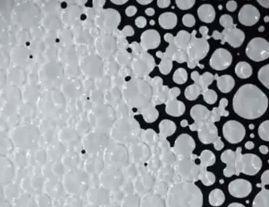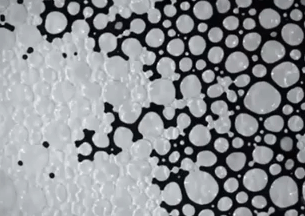There IS Actually A Reason Why Seconds And Minutes (and Degrees For Geometry) Are In Base 60 Instead
there IS actually a reason why seconds and minutes (and degrees for geometry) are in base 60 instead of base 10, and if you want to blame someone for that, blame the very specific way Babylonians counted with their fingers.
More Posts from Sciencebloggin and Others
the fact elon mask genuinely might ruin the night sky for everyone makes me wanna sharpen my shovel and get to work
human brain: Opportunity rover accomplished its mission and then some! It lasted far longer than we could’ve ever hoped. This should be celebrated, Opportunity did really well.
monkey brain: BUT SHE DIED ALL ALONE AND IN THE DARK AND ON A PLANET ALL THE WAY OUT IN SPACE AWAY FROM HOME!!! DOES SHE KNOW HOW PROUD OF HER WE ARE?! DID SHE THINK WE FORGOT ABOUT HER?! I LOVE HER AND I WANT HER TO BE HAPPY AND TO THRIVE AND I JUST WANT TO HUG HER AND LET HER KNOW HOW MUCH I CARE ABOUT HER!!! WE DIDN’T FORGET ABOUT YOU, OPPY!!! WE LOVE YOU SO MUCH AND I WOULD KILL ANYONE AND EVERYONE JUST FOR YOU TO HAVE PASSED AMONG FRIENDS AND FAMILY HERE ON EARTH!!!




Physics: What ink looks like running through soap bubbles
Source: Compilariz on YT
the new composite james webb image is so beautiful ive been staring at it for 10 minutes straight

featuring jupiters rings, amalthea (along with a bunch of other moons), the northern and southern auroras, and the great red spot
EDIT: FAQs answered here

VIDEO FROM THE SURFACE OF A COMET
This is truly incredible.
Details:
Remember Rosetta? That comet-chasing European Space Agency (ESA) probe that deployed (and accidentally bounced) its lander Philae on the surface of Comet 67P? This GIF is made up of images Rosetta beamed back to Earth, which have been freely available online for a while. But it took Twitter user landru79 processing and assembling them into this short, looped clip to reveal the drama they contained.

Quantum tunnelling
Tunneling is a quantum mechanical effect. A tunneling current occurs when electrons move through a barrier that they classically shouldn’t be able to move through. In classical terms, if you don’t have enough energy to move “over” a barrier, you won’t. However, in the quantum mechanical world, electrons have wavelike properties. These waves don’t end abruptly at a wall or barrier, but taper off quickly. If the barrier is thin enough, the probability function may extend into the next region, through the barrier! Because of the small probability of an electron being on the other side of the barrier, given enough electrons, some will indeed move through and appear on the other side. When an electron moves through the barrier in this fashion, it is called tunneling.

Quantum mechanics tells us that electrons have both wave and particle-like properties. Tunneling is an effect of the wavelike nature.

The top image shows us that when an electron (the wave) hits a barrier, the wave doesn’t abruptly end, but tapers off very quickly - exponentially. For a thick barrier, the wave doesn’t get past.
The bottom image shows the scenario if the barrier is quite thin (about a nanometer). Part of the wave does get through and therefore some electrons may appear on the other side of the barrier.
Because of the sharp decay of the probability function through the barrier, the number of electrons that will actually tunnel is very dependent upon the thickness of the barrier. The current through the barrier drops off exponentially with the barrier thickness
Source: nanoscience.com | Images: x | x | x

Ch😲
Sound on!


Vanadinite
Locality: Mibladen, Morocco
.
-
 r1ddlemethis liked this · 1 month ago
r1ddlemethis liked this · 1 month ago -
 goblinofthelibrary reblogged this · 1 month ago
goblinofthelibrary reblogged this · 1 month ago -
 dianoitikoitita reblogged this · 2 months ago
dianoitikoitita reblogged this · 2 months ago -
 superman-icecream13 reblogged this · 2 months ago
superman-icecream13 reblogged this · 2 months ago -
 futureseaempress reblogged this · 2 months ago
futureseaempress reblogged this · 2 months ago -
 amethysttigerfigurine liked this · 2 months ago
amethysttigerfigurine liked this · 2 months ago -
 umbral-executor reblogged this · 2 months ago
umbral-executor reblogged this · 2 months ago -
 thesaltysagittarious reblogged this · 2 months ago
thesaltysagittarious reblogged this · 2 months ago -
 teruoturtle liked this · 2 months ago
teruoturtle liked this · 2 months ago -
 art-is-art-ist-art liked this · 2 months ago
art-is-art-ist-art liked this · 2 months ago -
 citrusuprising liked this · 2 months ago
citrusuprising liked this · 2 months ago -
 dweeby-posser liked this · 2 months ago
dweeby-posser liked this · 2 months ago -
 catnip-cryptidd reblogged this · 2 months ago
catnip-cryptidd reblogged this · 2 months ago -
 catnip-cryptidd liked this · 2 months ago
catnip-cryptidd liked this · 2 months ago -
 1bee2a liked this · 2 months ago
1bee2a liked this · 2 months ago -
 49436 liked this · 2 months ago
49436 liked this · 2 months ago -
 quicherat reblogged this · 2 months ago
quicherat reblogged this · 2 months ago -
 quicherat liked this · 2 months ago
quicherat liked this · 2 months ago -
 kosmicdragon reblogged this · 2 months ago
kosmicdragon reblogged this · 2 months ago -
 atomicfanboy reblogged this · 2 months ago
atomicfanboy reblogged this · 2 months ago -
 atomicfanboy liked this · 2 months ago
atomicfanboy liked this · 2 months ago -
 spectre-squared reblogged this · 2 months ago
spectre-squared reblogged this · 2 months ago -
 the-queer-demon reblogged this · 2 months ago
the-queer-demon reblogged this · 2 months ago -
 jackobox reblogged this · 2 months ago
jackobox reblogged this · 2 months ago -
 smol-civet liked this · 2 months ago
smol-civet liked this · 2 months ago -
 goblinofthelibrary reblogged this · 2 months ago
goblinofthelibrary reblogged this · 2 months ago -
 honey-skulls liked this · 2 months ago
honey-skulls liked this · 2 months ago -
 captainotterlet reblogged this · 2 months ago
captainotterlet reblogged this · 2 months ago -
 goblinofthelibrary liked this · 3 months ago
goblinofthelibrary liked this · 3 months ago -
 goblinofthelibrary reblogged this · 3 months ago
goblinofthelibrary reblogged this · 3 months ago -
 sassyweavings reblogged this · 3 months ago
sassyweavings reblogged this · 3 months ago -
 a-tired-bass reblogged this · 3 months ago
a-tired-bass reblogged this · 3 months ago -
 mellard reblogged this · 3 months ago
mellard reblogged this · 3 months ago -
 alienducky reblogged this · 3 months ago
alienducky reblogged this · 3 months ago -
 alienducky liked this · 3 months ago
alienducky liked this · 3 months ago -
 dxitydoo reblogged this · 3 months ago
dxitydoo reblogged this · 3 months ago -
 dxitydoo liked this · 3 months ago
dxitydoo liked this · 3 months ago -
 impossiblepackage reblogged this · 3 months ago
impossiblepackage reblogged this · 3 months ago -
 stolennumbers reblogged this · 3 months ago
stolennumbers reblogged this · 3 months ago -
 oldblackhat reblogged this · 3 months ago
oldblackhat reblogged this · 3 months ago -
 doodlenix reblogged this · 3 months ago
doodlenix reblogged this · 3 months ago -
 missmoon123 liked this · 3 months ago
missmoon123 liked this · 3 months ago -
 birdbirdwood reblogged this · 3 months ago
birdbirdwood reblogged this · 3 months ago -
 henchmaxxing liked this · 3 months ago
henchmaxxing liked this · 3 months ago -
 firstservantmurdered reblogged this · 3 months ago
firstservantmurdered reblogged this · 3 months ago -
 alimpsonmorereblogs reblogged this · 3 months ago
alimpsonmorereblogs reblogged this · 3 months ago -
 communist--on--main reblogged this · 3 months ago
communist--on--main reblogged this · 3 months ago -
 ambiguousjellyfish reblogged this · 3 months ago
ambiguousjellyfish reblogged this · 3 months ago -
 whatagneissrock reblogged this · 3 months ago
whatagneissrock reblogged this · 3 months ago
